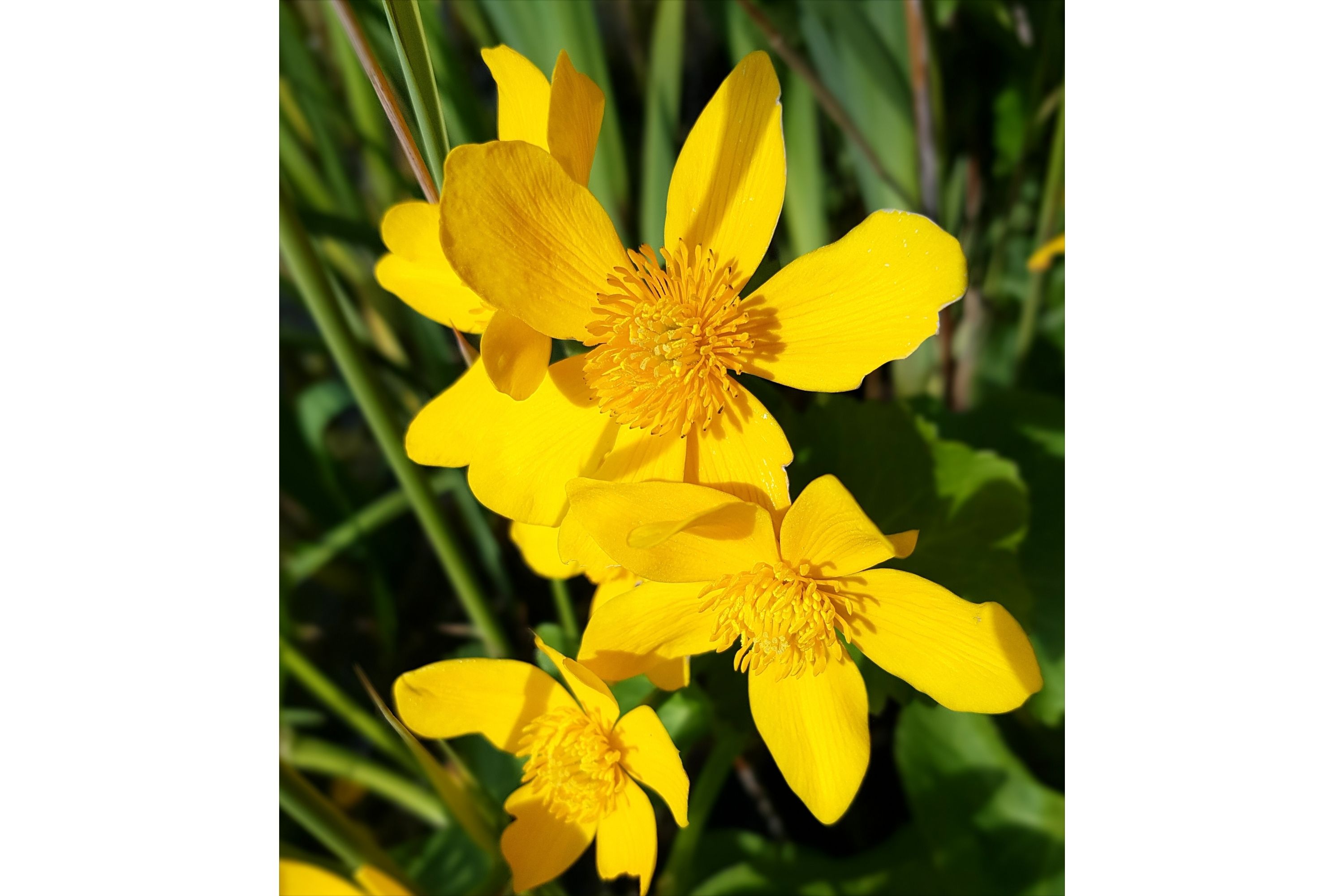Caltha palustris barthei
(Caltha palustris barthei)

Description
Caltha palustris, known as marsh-marigold and kingcup, is a small to medium size perennial herbaceous plant of the buttercup family, native to marshes, fens, ditches and wet woodland in temperate regions of the Northern Hemisphere. It flowers between April and August, dependent on altitude and latitude, but occasional flowers may occur at other times. Caltha palustris is a 10–80 cm (3.9–31.5 in) high, hairless, fleshy, perennial, herbaceous plant, that dies down in autumn and overwinters with buds near the surface of the marshy soil. The plants have many, 2–3 mm (0.079–0.118 in) thick strongly branching roots. Its flowering stems are hollow, erect or more or less decumbent. The alternate true leaves are in a rosette, each of which consist of a leaf stem that is about 4× as long as the kidney-shaped leaf blade, itself between 3–25 cm (1.2–9.8 in) long and 3–20 cm (1.2–7.9 in) wide, with a heart-shaped foot, a blunt tip, and a scalloped to toothed, sometime almost entire margin particularly towards the tip. In their youth the leaves are protected by a membranous sheath, that may be up to 3 cm (1.2 in) long in fully grown plants. The common marsh-marigold mostly has several flowering stems of up to 80 cm (31 in) long, carrying mostly several seated leaflike stipules, although lower ones may be on a short petiole; and between four and six (but occasionally as few as one or as many as 25) flowers. The flowers are approximately 4 cm (1.6 in) (ranging 2–5.5 cm (0.79–2.17 in) in diameter. There are four to nine (mostly five) petal-like, brightly colored (yolk yellow, white or magenta), inverted egg-shaped sepals, each about 1.75 cm (0.69 in) (ranging 1–2.5 cm (0.39–0.98 in)) long and 1.33 cm (0.52 in) (ranging 0.75–1.75 cm (0.30–0.69 in)) wide with a blunt or sometimes acute tip. Real petals and nectaries are lacking. Between 50 and 120 stamens with flattened yellow filaments and yellow tricolpate or sometimes pantoporate pollen encircle 5–25 free, flattened, linear-oblong, yellow to green carpels, with a two-lobed, obliquely positioned stigma, and each with many seedbuds. This later on develops into a seated, funnel-shaped fruit (a so-called follicle) of 0.75–2 cm (0.30–0.79 in) long and 0.25–0.5 cm (0.098–0.197 in) wide, that opens with one suture at the side of the axis and contains 7–20 ovoid, brown to black seeds of about 2.5 mm × 1.5 mm (0.098 in × 0.059 in.
Taxonomic tree:







